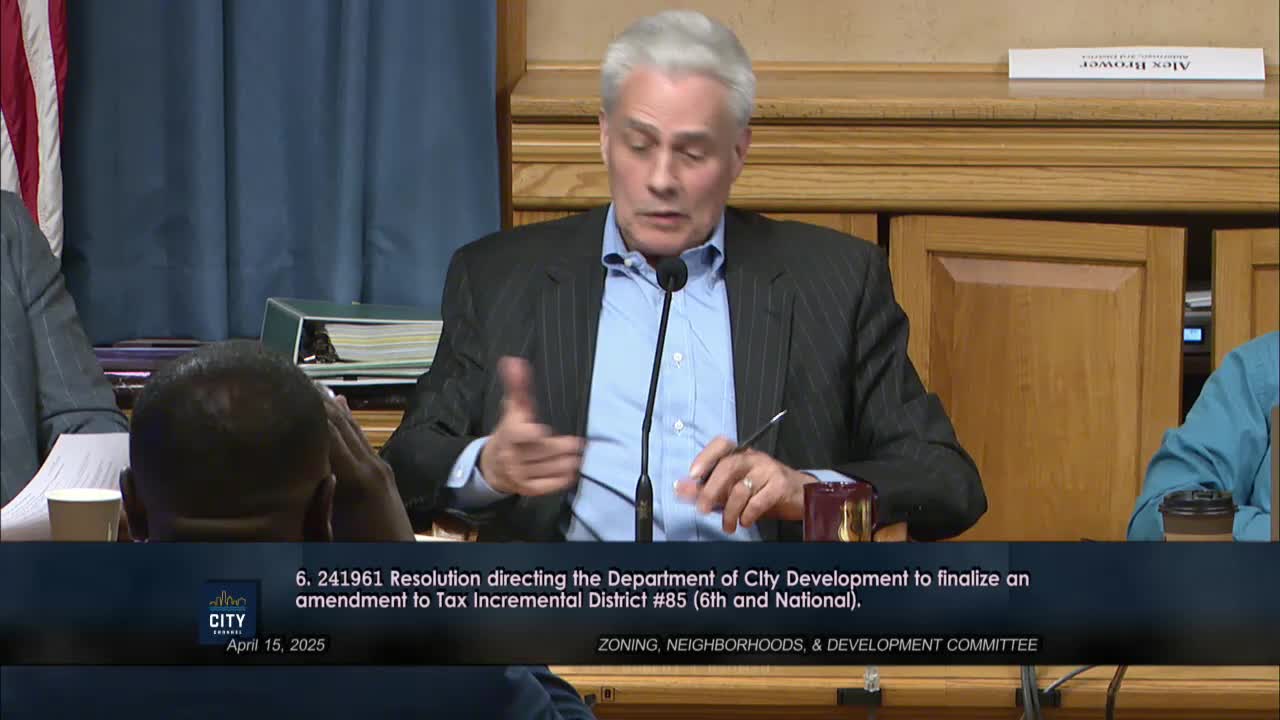Alderman Chambers leads Milwaukee discussions on housing affordability crisis
April 15, 2025 | Milwaukee , Milwaukee County, Wisconsin
This article was created by AI summarizing key points discussed. AI makes mistakes, so for full details and context, please refer to the video of the full meeting. Please report any errors so we can fix them. Report an error »

The Milwaukee Zoning, Neighborhoods & Development Committee convened on April 15, 2025, to address pressing issues surrounding workforce housing and the challenges faced by developers in the city. The meeting highlighted the current state of housing development, particularly the difficulties in financing workforce housing due to rising construction costs and interest rates.
The discussion began with a focus on the perception that progress in workforce housing has stalled. Alderman Chambers emphasized the need for clarity on the guidelines for financial support in this area. The committee acknowledged that the current economic climate, characterized by high interest rates and increased construction costs, has made it challenging for developers to create affordable housing options.
Tim Gockman, managing director of Newland Enterprises, provided insights into the broader context of the housing crisis, noting that Milwaukee is not alone in facing these challenges. He pointed out that the city has become the least affordable in the Midwest, with over half of renter households classified as rent-burdened. Gockman attributed this situation to a combination of lower median incomes and significant increases in construction costs—over 40% since 2020.
Gockman detailed the financial implications of these rising costs, explaining that the price of constructing new housing units has escalated to a point where market rates are no longer attainable for many residents. For instance, a recent project required rents to be set at $2,100 per month, far exceeding what is affordable for the average Milwaukee resident.
The committee also discussed the distinction between affordable housing and workforce housing. While affordable housing targets households earning less than 60% of the area median income (AMI), workforce housing is aimed at those earning between 60% and 120% of AMI. Gockman stressed that without significant city, state, and federal collaboration, it is nearly impossible to create new affordable housing units that meet the necessary price points.
The meeting concluded with a consensus on the urgent need for improved city policies and incentives to facilitate the development of both workforce and affordable housing. The committee recognized that the current regulatory framework and assistance packages are insufficient to meet the growing demand for housing in Milwaukee. As the city continues to grapple with these issues, the committee's discussions underscore the critical need for strategic action to address the housing crisis effectively.
The discussion began with a focus on the perception that progress in workforce housing has stalled. Alderman Chambers emphasized the need for clarity on the guidelines for financial support in this area. The committee acknowledged that the current economic climate, characterized by high interest rates and increased construction costs, has made it challenging for developers to create affordable housing options.
Tim Gockman, managing director of Newland Enterprises, provided insights into the broader context of the housing crisis, noting that Milwaukee is not alone in facing these challenges. He pointed out that the city has become the least affordable in the Midwest, with over half of renter households classified as rent-burdened. Gockman attributed this situation to a combination of lower median incomes and significant increases in construction costs—over 40% since 2020.
Gockman detailed the financial implications of these rising costs, explaining that the price of constructing new housing units has escalated to a point where market rates are no longer attainable for many residents. For instance, a recent project required rents to be set at $2,100 per month, far exceeding what is affordable for the average Milwaukee resident.
The committee also discussed the distinction between affordable housing and workforce housing. While affordable housing targets households earning less than 60% of the area median income (AMI), workforce housing is aimed at those earning between 60% and 120% of AMI. Gockman stressed that without significant city, state, and federal collaboration, it is nearly impossible to create new affordable housing units that meet the necessary price points.
The meeting concluded with a consensus on the urgent need for improved city policies and incentives to facilitate the development of both workforce and affordable housing. The committee recognized that the current regulatory framework and assistance packages are insufficient to meet the growing demand for housing in Milwaukee. As the city continues to grapple with these issues, the committee's discussions underscore the critical need for strategic action to address the housing crisis effectively.
View full meeting
This article is based on a recent meeting—watch the full video and explore the complete transcript for deeper insights into the discussion.
View full meeting
